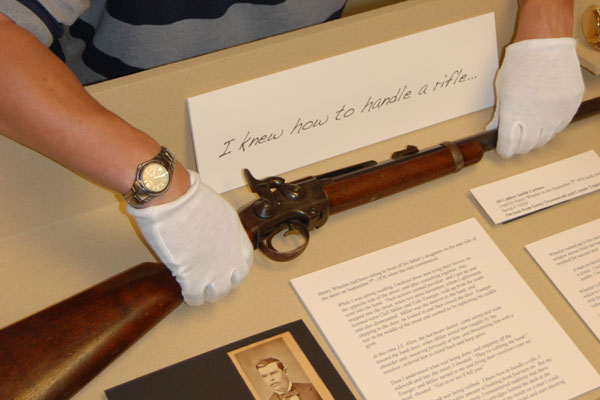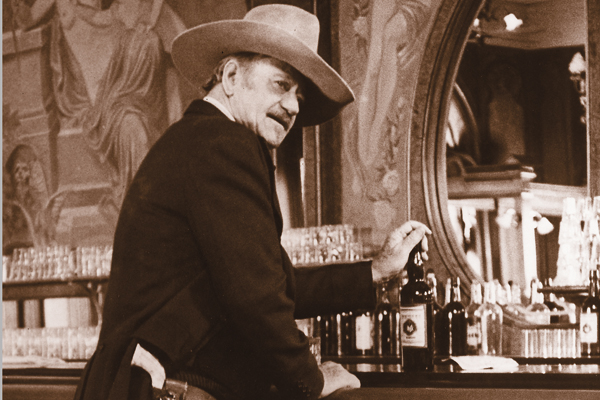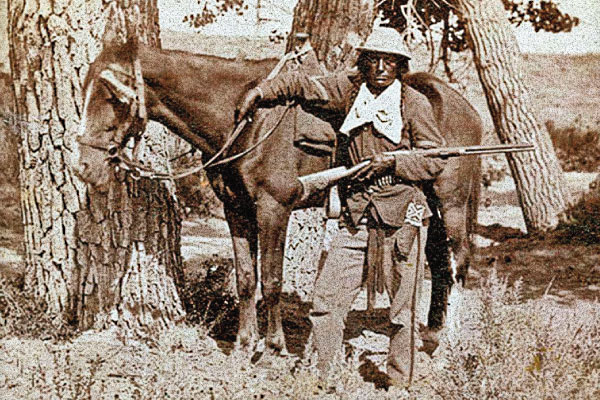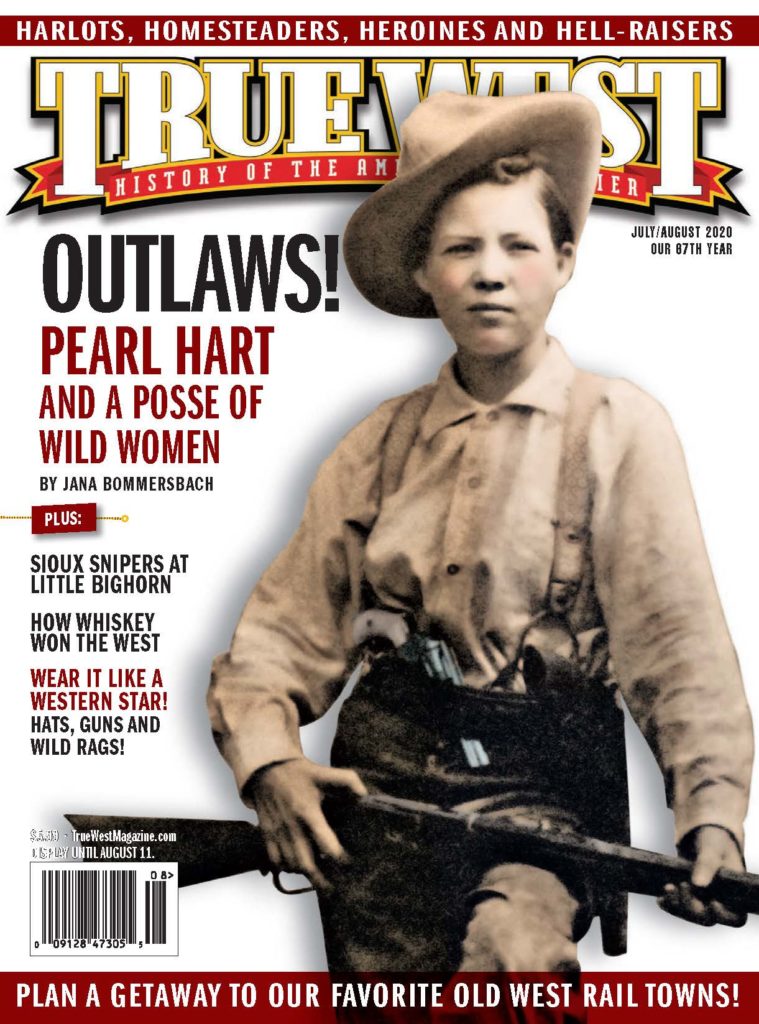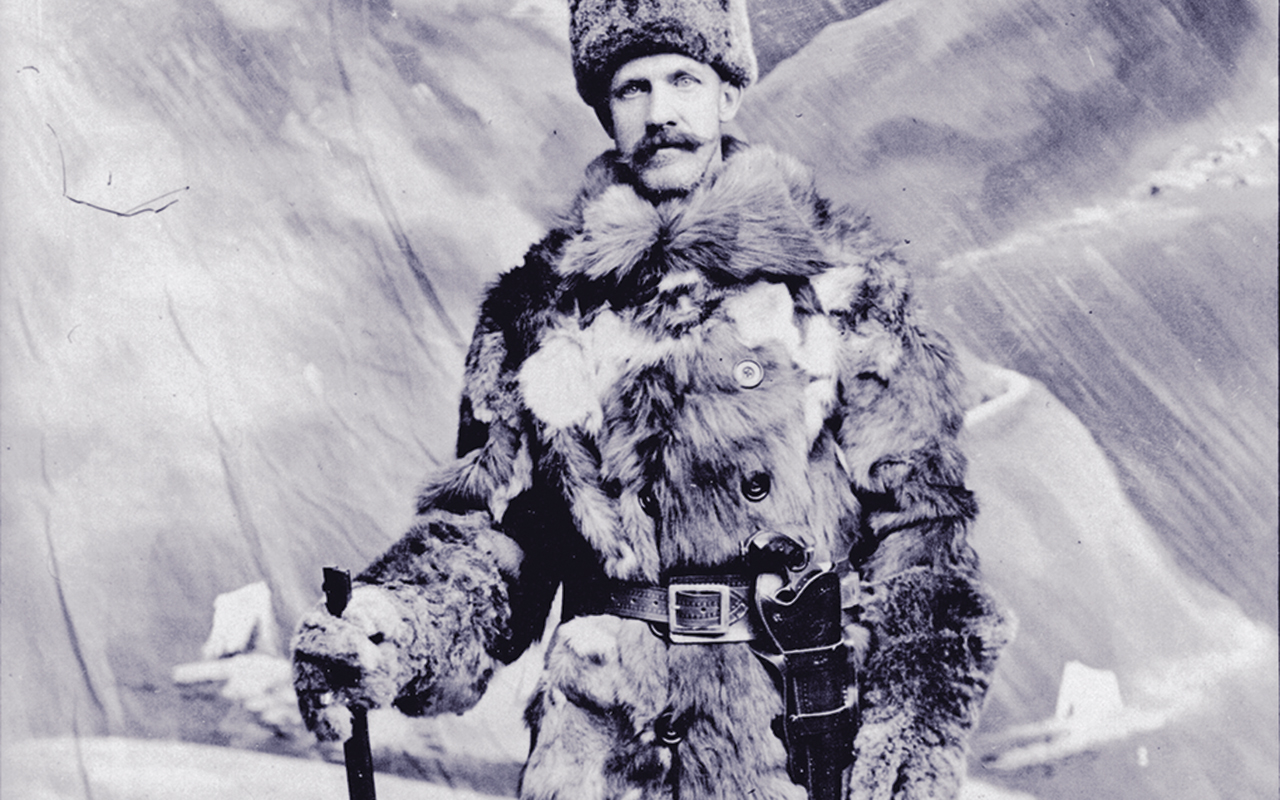
– Courtesy Herb Peck, Jr. Collection –
It’s been called “America’s Deer Rifle,” and has stood the test of time. John Browning’s 1894 lever gun has enjoyed almost continuous production by various companies up through the present. However, through the years, it has gone through some minor changes, such as the current production’s replacing of the original top cartridge eject feature to an angle eject, that allows for the mounting of a telescopic sight. It has also had the addition of a cross bolt safety, rather than the original half-cock safety notch in the hammer. Nevertheless, the rifle is a classic that’s been enjoyed by millions for 126 years.
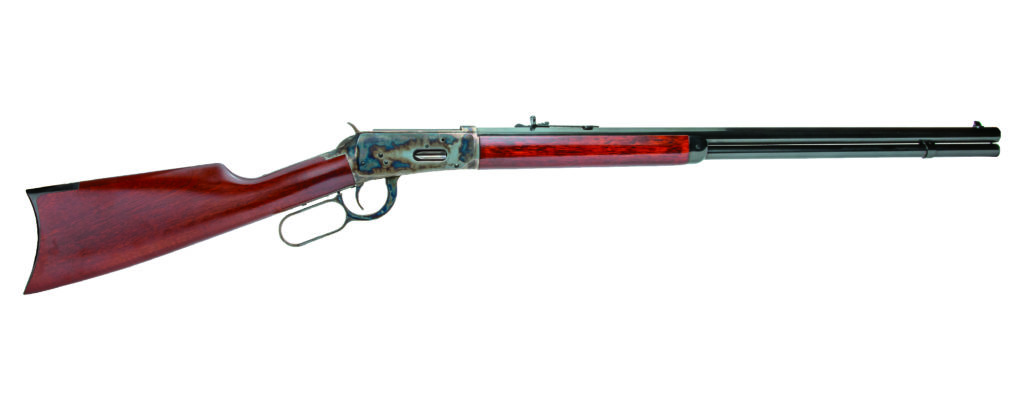
– All Photos Courtesy Cimarron Firearms Unless Otherwise Noted –
For purists who want to enjoy the 1894 model as it was originally manufactured, Cimarron Firearms has brought out a handsome Italian-import replica of the 1894 lever-action rifle and carbine that looks and functions exactly like a ’94 that would have left the factory before 1900. This Fredericksburg, Texas, outfit is offering its old-style 1894 rifle in either .38-55, or .30 WCF (.30-30)—both currently smokeless powder rounds, with .25-35, and .32-40 versions scheduled for the near future. The rifle features a 26-inch blued octagonal barrel, nose cap and butt plate, and a color case hardened receiver, hammer, lever and trigger. The carbine wears a blued receiver, butt plate, and a traditional 20-inch, blued round barrel, with a color case hardened lever, hammer and trigger. Stocks are European walnut. A dovetailed blade front sight and an adjustable buckhorn rear sight complete this handsome package.

I had an opportunity to give one of Cimarron’s 1894 carbines in .30-30 caliber a good workout while hunting on its Blue Moon Ranch, just outside of Fredericksburg. On my first day out, I bagged a nice little 6-point whitetail buck with a 40-yard shot, while using Federal’s 150-grain soft point ammo. The next few days I spotted virtually no game! However, on the last afternoon, I decided to hunt one more time. For this final quest I used Remington’s 170-grain, soft point loads. Holing up in a blind that faced an open pasture, I waited for a considerable time with no game sightings. About the time I figured it would be another “dry” day, a pair of does appeared, browsing about 175 yards from my blind. Although I had doe tags, I decided I still had plenty of daylight to give it a few more minutes to see if a buck might appear.
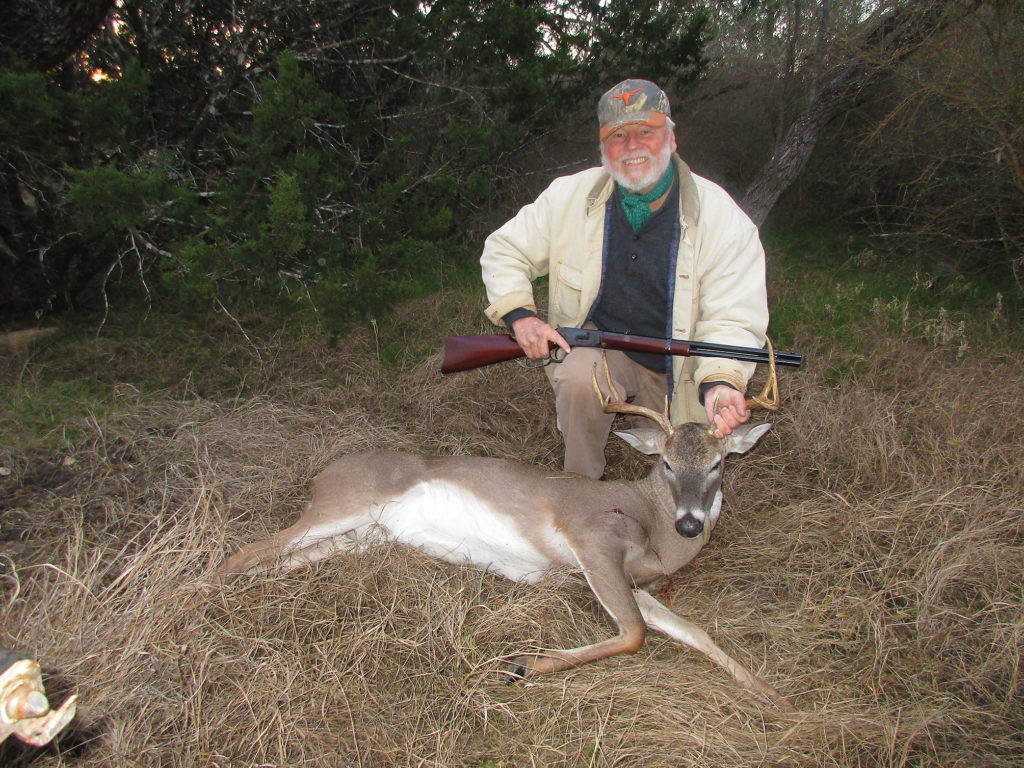
– Phil Spangenberger –
Sure enough, from a large clump of mesquite bushes, out walked a nice buck. Carefully checking out his rack, I decided to go for him, but he was a bit too far for me to risk a clean shot with open iron sights. Slowly, all three deer worked their way back and forth across the open ground, angling ever closer to me. Finally, after what seemed like an eternity, the buck started browsing near a live oak tree, at what later measured 101 yards distance. Noticing the does starting to work their way farther from me, I decided it was now or never, as I knew the buck would follow. Carefully, as he shrank behind those iron sights, I settled them right in his heart/shoulder area, I gently squeezed the five-pound crisp trigger of the Cimarron, and fired. The buck jumped straight up, turned and ran back into the mesquite. Quickly, I exited the blind, walked carefully toward the bushes, and there he was, lying there with a clean heart shot. I was ecstatic. I and the Cimarron ‘94 had both done our part, and I wound up bringing home plenty of fresh venison from my hunts.
If you’re a fan of the old 1894 model lever-action, or would like to give one a try, give the Cimarron 1894 a look. It’s made in the configuration of the original 1890s rifle and I honestly don’t think you could do any better.
Phil Spangenberger has written for Guns & Ammo, appears on the History Channel and other documentary networks, produces Wild West shows, is a Hollywood gun coach and character actor, and is True West’s Firearms Editor.

